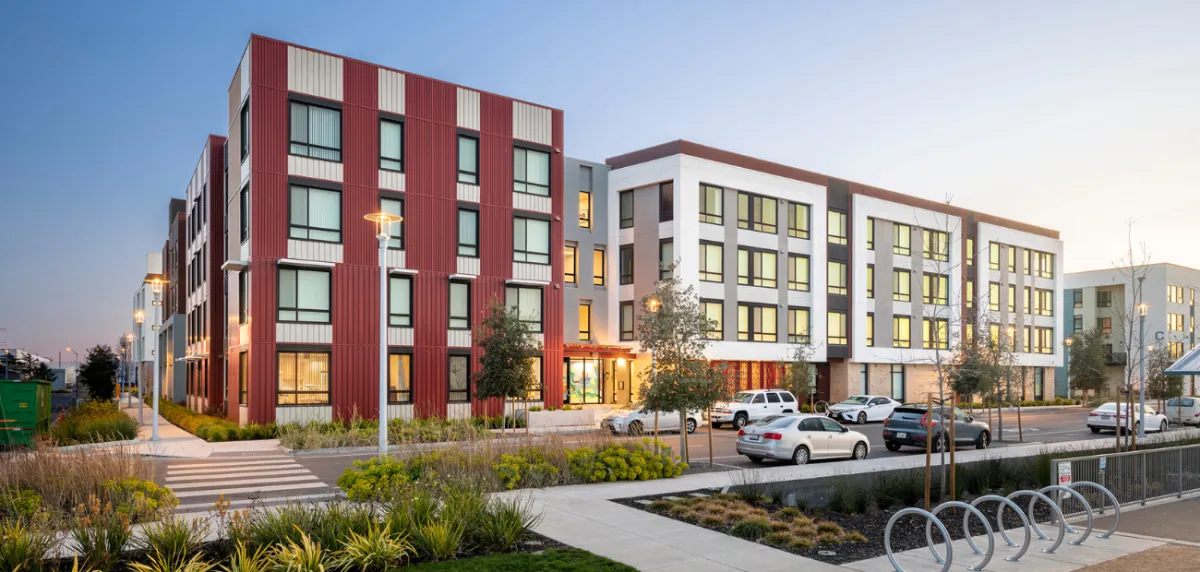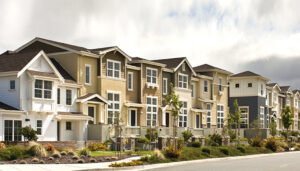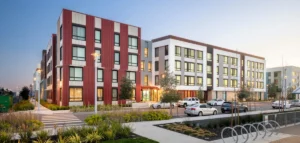MILD SLOWDOWN IN APARTMENT DEMAND
The overall multifamily vacancy rate likely will rise by 20 bps to 4.5%, still below the long-term average of 5.1%. Rent growth will edge down to about 2.4%, just under the long-term average of 2.6%.
As a result of slower economic growth, apartment demand is projected at 240,000 units in 2020, approximately 20% less than 2019’s estimated 300,000 units. Millennials will continue to move into homeownership, albeit at a modest pace due to affordability issues. Nevertheless, multifamily demand will remain sufficient enough to absorb most of new supply and to lower concessions in oversupplied markets.
NEW SUPPLY NEAR CYCLICAL PEAK IN 2020
Multifamily developers will remain very active in 2020. Permits, starts and completions were all at or near this cycle’s highest levels in 2019. In 2020, permits and starts likely will fall, but not deliveries. CBRE Research predicts that multifamily completions will total 280,000 units, on par with 2019’s estimated 281,000 units.
Development will continue in both urban and suburban locations next year. The geographic emphasis, however, is shifting to the suburbs—both mid-rise “urbanesque” product in the densifying suburbs and garden product in more traditional greenfield locations.
FIGURE 13: MULTIFAMILY COMPLETIONS TO REMAIN ROBUST IN 2020

Source: CBRE Research (2020 forecast), CBRE Econometric Advisors (history, 2019 estimate), Q3 2019. Completions of newly-built communities are counted in the quarter in which the property reaches occupancy stabilization.
RENT CONTROL TO HAVE BIGGER IMPACT IN 2020
New rent regulations have been instituted in a few key markets and many more are being considered to alleviate rising rental housing costs. Housing economists concur that building more housing is a better response to the problem than rent control, but 2020 will bring more debate, possibly more regulation and more unease for the industry.
New rent control legislation was enacted this year in New York, California and Oregon. On the watch list for possible legislation are Illinois and Washington state, along with more restrictive legislation in California. New York Metro’s 9.2% year-over-year drop in multifamily investment in the first eight months of 2019 was partly caused by the implementation of new rent control regulations. In California, investment activity was mixed for the same period. Greater Los Angeles had a 9.8% drop in investment year-over-year, but the San Francisco Bay Area had a 7.4% increase. Investment also rose in Portland (23.5%).
SUBURBAN MULTIFAMILY WILL CONTINUE TO OUTPERFORM IN 2020
Buying or building in the suburbs will remain the best bet based on market performance and investment returns. Suburban multifamily will outperform urban, maintaining lower vacancy and achieving higher rent growth.
CBRE Research’s top four markets for multifamily performance in 2020 are Austin, Atlanta, Phoenix and Boston. The first three are very high-growth metros by population, households, employment and multifamily demand. Construction is very active in these markets. In Atlanta and Phoenix, development has not ramped up to levels that should cause any concerns. Development in Austin has tapered off. Among the gateway markets, Boston is the star performer.
Investors and developers should also consider smaller metros (e.g., less than 2 million population). While liquidity and overbuilding risks are generally higher in smaller markets, there are several metros with exceptional multifamily performance today resulting from favorable supply/demand fundamentals (steady growth over recent years and only moderate development activity). Many smaller metros are undergoing a significant upgrading of their urban cores, thereby improving quality of life and helping them retain talent.
Seven smaller metros had 4% or higher rent growth as of Q3 2019: Albuquerque, Birmingham, Colorado Springs, Greensboro, Memphis, Dayton and Tucson. They are likely candidates for outperformance in 2020.











